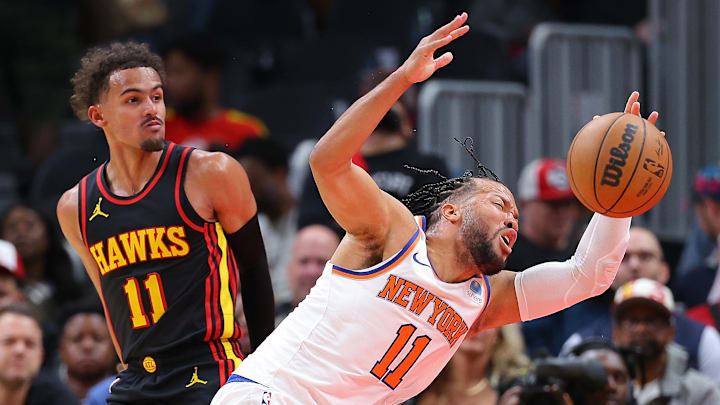Trae Young, despite all of his offensive brilliance, has one glaring flaw in his revolutionary playstyle. There's really no easy way to say it without sounding like a critic - he's a defensive liability.
Hawks fans have been well aware of Young's defensive weaknesses, which painfully tend to appear time and again during the most important games - the playoffs. In such an environment, basketball is not too dissimilar to a game of chess; coaches are forced to think many moves ahead to out-play the opposing team's council.
Of course, the game ultimately is decided by the players who set foot on the hardwood themselves. Still, without a leader multiple steps ahead of the opposition, victory is much less assured.
Thanks to one of the most fruitful offseasons in Atlanta's franchise history, Quin Snyder finally can make a defensive adjustment that other coaches have employed to hide their respective defensive liabilities.
Hide Trae Young at all costs.
The term "hiding" a player on defense is exactly what it sounds like - the coach does everything in their power to keep the opposition from isolating their weakest defender. Without diving deeper, the first thought of any coach would simply be to hide Trae Young in the corner - but offenses have long since adapted to such a simplistic move.
Modern-day NBA offenses are able to attack weaker defenders through a simple high ball-screen set by whoever they're assigned to - just like that, Trae Young finds himself at the top of the key in isolation against Jalen Brunson, SGA, Cade Cunningham and other elite creators, and it's all but assured to result in a supremely efficient look.
A select few defenses have adjusted to this offensive revolution and reaped delicious rewards in the form of deep playoff success - the most recent example being the aforementioned Jalen Brunson's Knicks.
Coach Tom Thibodeau was blessed by upper management in New York that surrounded Brunson with elite perimeter defenders (O.G. Anunoby, Mikal Bridges, Josh Hart) that were able to pre-switch whenever a screen was set to target Brunson. In so doing, the defense was able to very successfully hide their weakest defender, and prevent high-volume isolation scorers from flourishing.
Without a doubt, Onsi Saleh saw this happen in real-time and made the calls necessary to surround Young with defenders akin to Brunson's enforcers. Young has long been flanked by sub-par perimeter stoppers (e.g., Bogdan Bogdanovic, Lou Williams, Kevin Huerter) that despite their shared offensive excellence, either lack the physical tools, the defensive skills, or the communication necessary to pre-switch with Young to avoid mismatches.
This offseason's acquisition of Nickeil Alexander-Walker, the return of a healthy Jalen Johnson, the rapid physical and defensive development of French phenom Zaccharie Risacher, and the ever-stellar Dyson Daniels combine to form an intimidating quartet of defenders more than capable of pre-switching to hide Trae on defense.
To further bolster this scheme, Saleh made the move of trading for elite rim protector Kristaps Porzingis - the idea of employing a towering help-side defender with the ability to blow up attempts to exploit pre-switching on the back line has historically proven successful (see Mitchell Robinson on the same Knicks squad).
The ball is now squarely in Quin Snyder's court. Based on his history of coaching success and analytically inclined mind, I have no doubt that we'll be seeing a well-hidden Trae on defense this year.
